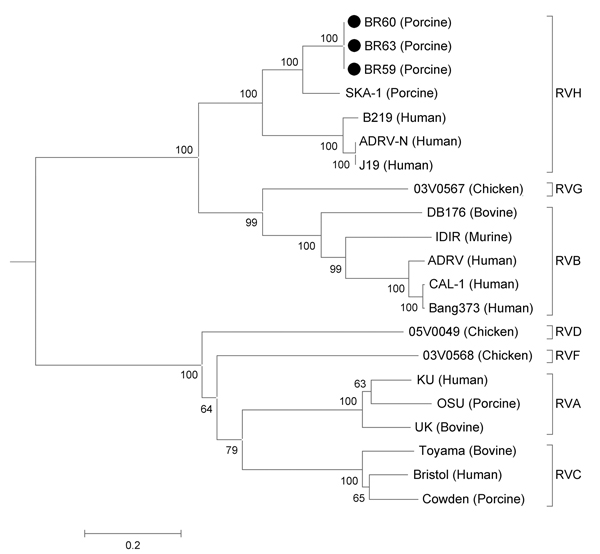Volume 20, Number 6—June 2014
Dispatch
Species H Rotavirus Detected in Piglets with Diarrhea, Brazil, 2012
Figure

Figure. Phylogenetic tree showing the inferred evolutionary relationships among representative rotavirus (RV) strains belonging to species A, B, C, D, F, G, and H, as well as the samples BR59, BR60, and BR63 based on an 1,197-bp fragment of the viral protein 6 (VP6) geneThe tree was constructed by using the neighbor-joining method and the Kimura 2-parameter nucleotide substitution modelBootstrapping was statistically supported with 1,000 replicatesScale bar indicates nucleotide substitutions per siteThe VP6 gene sequences of the following strains were obtained from the GenBank database (accession nos.): BR59 (KF021619), BR60 (KF021620), BR63 (KF021621), KU (AB022768), UK (X53667), OSU (AF317123), ADRV (M55982), CAL-1 (AB037931), Bang373 (AY238389), DB176 (GQ358713), IDIR (M84456), Bristol (X59843), Toyama (AB738416), Cowden (M94157), 05V0049 (GU733448), 03V0568 (HQ403603), 03V0567 (HQ403604), ADRV-N (AY632080), B219 (DQ168033), J19 (DQ113902), and SKA-1 (AB576626).